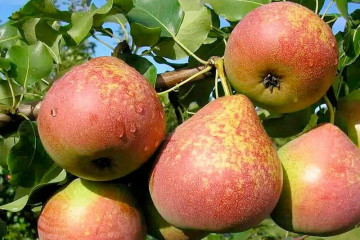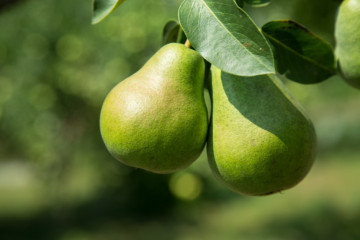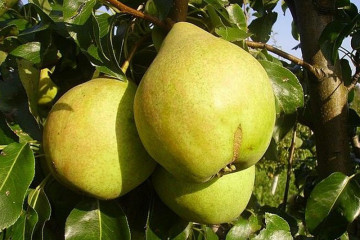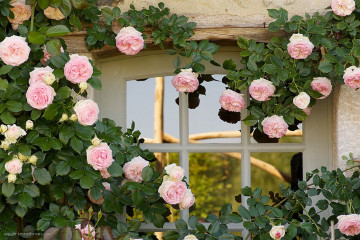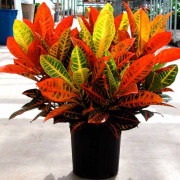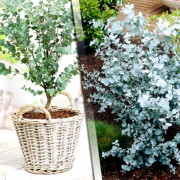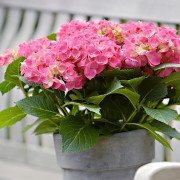Pear Talgar beauty - description and characteristics of the variety
Content:
Pear Talgar beauty is a variety that is especially popular among gardeners. It differs from other varieties in high yield and unpretentious care. However, despite this, in order to get a good harvest, you will have to familiarize yourself with the peculiarities of growing the variety in advance.
Description and characteristics of pears Talgar beauty
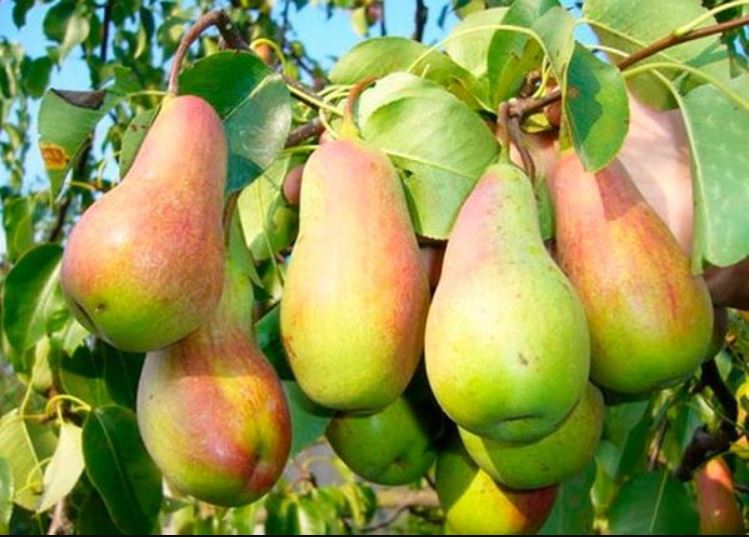
Talgar beauty - a popular variety of pears with delicious fruits
Before you start growing a plant, you need to read its description.
Description of the tree
The tree is not very tall, it grows only up to three meters in height. In this case, the crown is spreading, in the form of a cone. The barrel has a flaky surface, painted in dark gray. Shoots are long enough, growing at right angles.
The foliage is oval and flat, colored green. The variety begins to bloom late - at the end of May. During this period, many ovaries are formed on the branches.
Description of fruits and ripening dates
Fruiting begins in mid-September. The fruits are large, weighing 150 grams. Painted in a yellowish color with a green tint. The pulp is firm and juicy, slightly sour.
Storage and transportability
The harvested crop can be stored in well-cooled rooms for 3-4 months. The shelf life is halved at room temperature. The harvested fruit has excellent transportability.
Using
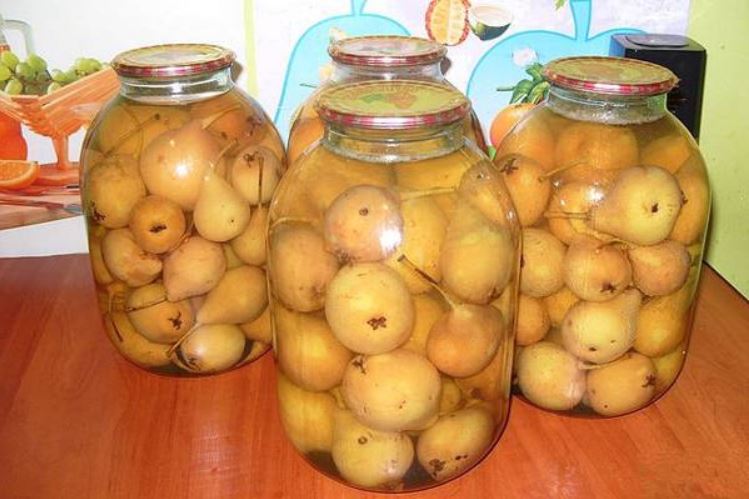
Ripe fruits can be used to make delicious jam and compote
Talgarka pear is often used in cooking. Its fruits are ideal for making jam or compote.
Yield
The yield of the variety is stable, increasing every year. On average, 30-50 kilograms of fruit can be obtained from each tree. However, in order to achieve this result, the pear will have to be properly looked after.
Cyclic fruiting
The first crop begins to form only four years after planting in open ground. Then fruiting occurs annually.
Self-fertility
This variety can be classified as self-infertile. It is cross-pollinated. If there are no pollinators, the yield can decrease significantly.
What regions is the variety adapted to
The variety was bred by Kazakh breeders in the middle of the last century specifically for cultivation in the North Caucasus region. However, over time, it began to be cultivated in other regions as well. The pear is popular among gardeners in the Moscow Region, Stavropol Territory and Krasnodar Territory. You can also grow it on the territory of Belarus and Ukraine.
Despite its frost resistance, the tree must be prepared for winter, even when grown in the southern regions. The soil has to be mulched, and the trunk must be whitened so that the tree does not suffer from frost.
Pests and diseases
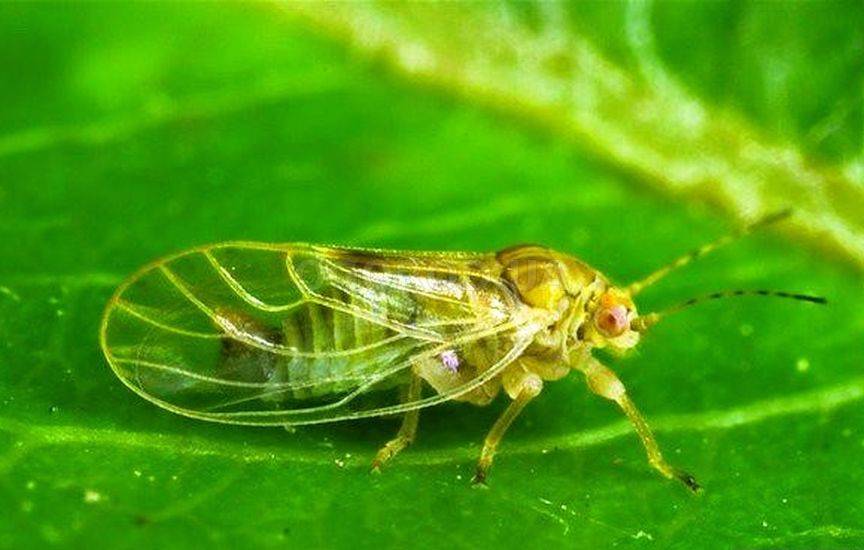
Copperhead is a dangerous pest for pears
Talgar beauty has good immunity. However, despite this, the tree can get sick with a number of diseases. The most common are:
- Rust. Due to the development of this ailment, the leaves of plants are covered with orange and yellowish spots. If the rust is left untreated, the tree may die. To stop the further spread of the disease, treatment with a carbamide solution will help.
- Black cancer. The disease manifests itself as cracks and dark lesions on the trunk. It is necessary to treat black cancer at the first signs of the onset of the disease. For this, the affected areas are treated with copper sulfate.
- Powdery mildew. A common disease in which the foliage is covered with a gray bloom. To prevent the appearance of powdery mildew, it is necessary to carry out preventive spraying with fungicides.
Sometimes the pear suffers from insect attack. Most often these are:
- aphid;
- honeydew;
- moth.
Varieties of varieties
Trees of the Talgar beauty variety can differ from each other only in size. Some tree species are not very tall and do not grow taller than two meters. There are plants that grow better, which allows them to grow up to 4-5 meters.
At the same time, the height of the tree largely depends on how it is looked after. If the content and agrotechnical measures are not suitable for the variety, then the tree will not be too tall.
Landing
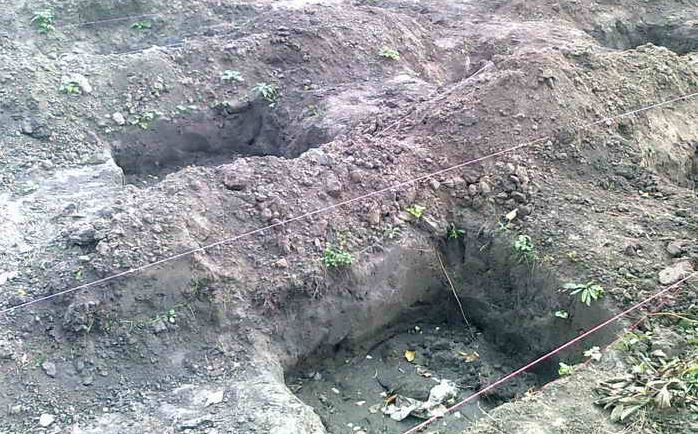
The dimensions of the planting pit should correspond to the size of the root system of the seedling
In order for the Talgar beauty to bear fruit well, it is necessary to plant it correctly. The disembarkation process consists of several sequential stages:
- Pit preparation. First, you need to prepare a hole in which the pear will be planted. It must be at least 60 centimeters deep. Width - 45-50 centimeters.
- Adding dressings. Fertilizers must be added to the dug hole in advance so that the tree is better taken. It is necessary to use compost, humus and phosphate fertilizers.
- Landing. The seedling must be carefully placed in the hole and the roots must be sprinkled with earth. The root collar should be 4-6 centimeters above the ground.
Care
A planted pear must be properly looked after. In the process of cultivation, you will have to do the following:
- Watering. Care must be taken to ensure that the soil does not dry out. In the spring, the tree is watered once a week. In the summer, moistening the soil should be done more often.
- Mulching. Despite the fact that the variety has winter hardiness, it is necessary to deal with mulching. The soil near the base of the trunk must be covered with sawdust and peat every autumn.
- Fertilizer. The first addition of fertilizers is done in mid-spring. The soil is fertilized with saltpeter. In autumn, the plant is fed with superphosphate and humus.
- Pruning. A year after planting, you can start forming the crown. All underdeveloped shoots are cut from the tree. Only long lateral branches remain.
- Preventive treatment. To protect the pear from pests, it is necessary to spray it annually with iron vitriol and Bordeaux mixture.
Ripening and storage of crops

The cellar is the best place to store pears
Fruit ripening begins in the second half of September. However, harvesting should be done a little later - at the beginning of October. It is not worth delaying the collection of ripe pears, as they can crumble due to strong gusts of wind and deteriorate on the ground.
It is recommended to store the harvested crop in a cool place. At low temperatures, the fruits do not deteriorate for a long time. At room temperature, pears start to rot very quickly. It is best to leave the plucked fruits in the cellar or in the refrigerator. They can be frozen if necessary.
Advantages and disadvantages
Talgar pear is an excellent variety with many advantages. Among the main advantages are:
- late flowering, which begins after the end of frost;
- resistance to low temperatures;
- high productivity;
- strong immunity and resistance to many diseases;
- long-term storage of the harvested crop;
- large fruit size.
Possible problems
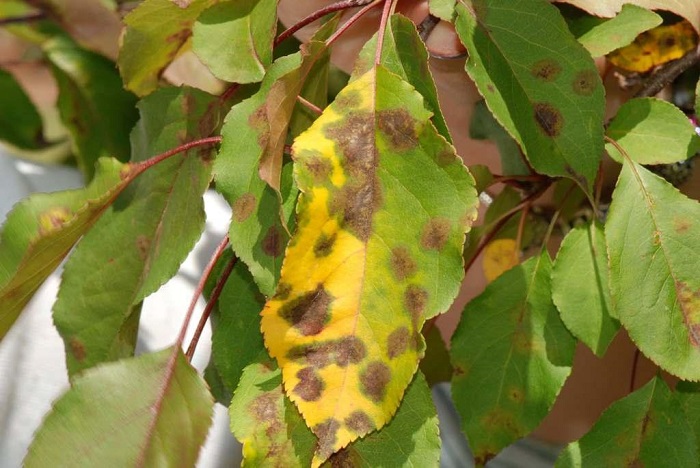
Yellow foliage is a common problem when growing pears
Some gardeners may face certain challenges when growing this variety:
- Yellowing and falling foliage. Most often this happens due to the attack of pests or the development of diseases.
- Slow ripening of fruits. The problem indicates a lack of nutritional components.
- Falling foliage. May be the result of a lack of moisture or feeding.
According to the description of the Talgar beauty pear, one can understand that it grows quickly and bears fruit well with proper care. Before you start growing it, you need to familiarize yourself with the peculiarities of planting such a pear and caring for it.
